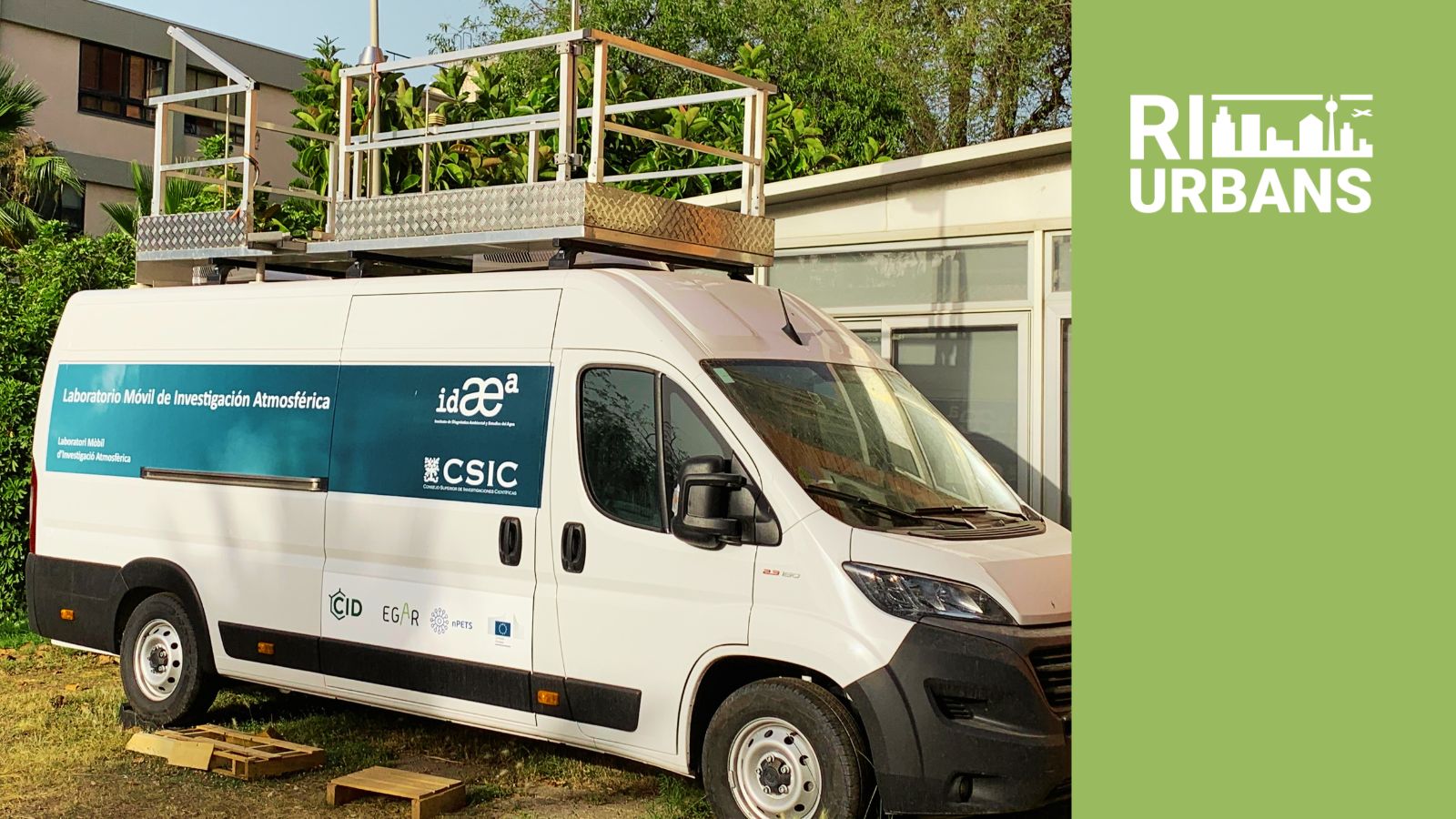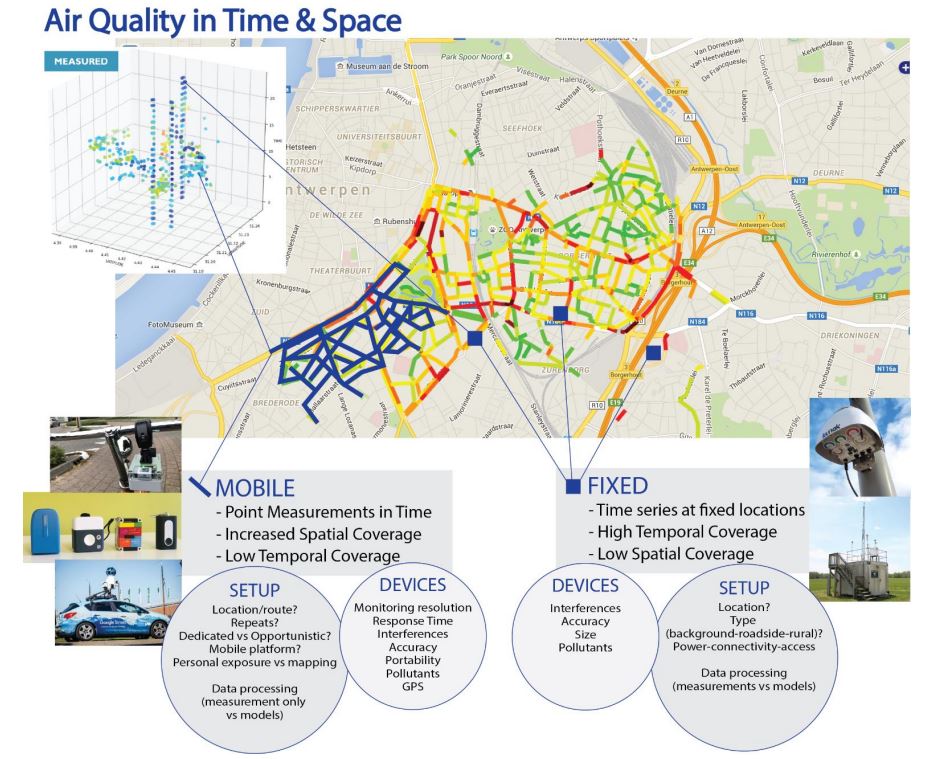
RI-URBANS describes a methodology for mobile monitoring and citizen involvement
- RI-URBANS publishes a methodology that summarizes complementary approaches to air quality monitoring systems in order to assess air quality for health and epidemiological studies
- It includes data collection methods for high-resolution exposure mapping, with and without citizen participation
Air quality is measured routinely through fixed air quality monitoring stations. These stations include high-quality monitors that fulfill the data quality requirements as set in the European Air Quality Directive (2008/50/EC).
Whereas a network of these fixed stations gives information on temporal trends of air quality, the network’s density is insufficient to give information on air quality at the street level.
Some pollutants, especially traffic-related ones (e.g. ultrafine particles, black carbon, nitrogen oxides), can show a very high spatial and temporal variability within a city or neighbourhood. Improved spatiotemporal resolution of air quality data is critical for an improved understanding of the connection between air quality parameters, human exposure, and consequent health effects.

Difference between mobile and fixed air quality measurements in terms of monitoring setup and device requirements. Source: Martine van Popple (VITO)
The methodology published by RI-URBANS summarizes complementary approaches to traditional air quality monitoring systems in order to assess air quality exposure for health and epidemiological studies, and to assess policy actions at the urban scale.
It also includes involving citizens and mechanisms to enroll citizens that can be readily upscaled at European levels.
The methodology can be found in the corresponding Deliverable D13 (D2.5):
